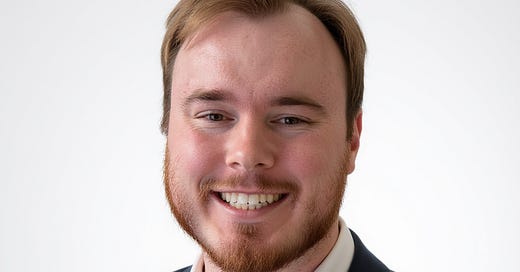Make America Healthy Again: Gen Z’s Glow-Up Revolution
Why We’re Trading Happy Meals for a Happier Future
Okay, I’ll admit it: I’m a Gen Z’er who loves McDonald’s. But even I can see the "Make America Healthy Again" (MAHA) movement is lighting a fire under my generation. Haile McAnally nails it: “There’s a reason why Make America Healthy Again is catching fire. It’s not about aesthetics or trendiness. It’s about a growing number of Americans, especially young people, who are realizing just how far we’ve drifted from what real health looks like.” We’re done with a system that’s left us sicker than ever, and we’re ready to rewrite the rules.
No More Blind Trust
Our parents, as McAnally points out, “trusted the system… the food on the shelves, the prescriptions they were given.” Not us. We’re staring down a health crisis that’s hard to ignore—autoimmune disorders popping up like unwanted notifications, hormonal chaos, and mental health struggles that feel like a Gen Z membership card. McAnally puts it bluntly: “Today, we know more. And we’re seeing the consequences of convenience culture and unchecked systems play out in real-time: autoimmune issues showing up earlier than ever, hormonal disorders being normalized in teenage girls, and mental health struggles becoming a permanent part of young adulthood.” The numbers are grim: as of 2021–2023, 40.3% of U.S. adults are obese, with severe obesity at 9.7%. For kids and teens, nearly 20% are obese, a rate that’s tripled since the 1970s. These aren’t just stats—they’re our reality.
Questioning the Quick Fixes
We’re done nodding along to quick fixes. Why are young women handed birth control like it’s a free sample for acne or irregular periods without anyone asking what’s causing the problem? McAnally’s on our wavelength: “We’re noticing things that don’t sit right. Like how common it is for teenage girls to be put on birth control for acne or irregular periods. But are we talking enough about what it does to their natural cycles? Or what’s causing those symptoms in the first place?”
The Great Food Fight
Then there’s the food industry. I love my McFlurry, but reading food labels feels like deciphering a sci-fi novel. McAnally asks, “Why are artificial dyes like Red 40 and Yellow 5 still used in the U.S. when they’re restricted or banned in other countries?” She’s right—why are we eating ingredients that sound like they belong in a lab, not a kitchen? Obesity stats tell the story: the rise of ultra-processed foods since the 1970s, fueled by agricultural subsidies, has pushed adult obesity from 15% in 1976–1980 to 41.9% in 2017–2020. Gen Z is fighting back, ditching processed junk for farmers’ markets and home-cooked meals, calling out brands that prioritize profits over our health.
How MAHA Got Its Groove
MAHA didn’t just pop up like a viral dance challenge. Its roots trace back to growing frustration with America’s health decline, but it gained steam in 2025. Posts on X highlight the MAHA PAC, which evolved from the American Values PAC, calling itself “a health renaissance and the defining cultural movement of our time.” The May 22, 2025, MAHA Summit in Washington, D.C., was a turning point, spotlighting stats like a 300% rise in childhood obesity since the 1970s, autism at 1 in 36, and diabetes doubling in two decades. Figures like Robert F. Kennedy Jr. pushed the message, targeting processed food subsidies and overmedication. But it’s Gen Z’s energy—fueled by X threads and TikTok exposés—that’s made MAHA a movement.
Where MAHA’s Headed
MAHA’s future is as bold as Gen Z’s attitude. We’re pushing for policy changes—think sugar taxes, clearer food labels, and subsidies for real food, not corn syrup. Community efforts are also booming: urban gardens, wellness apps, and a resurgence in church attendance. But the stakes are high. Obesity costs the U.S. $173 billion annually in medical expenses, and global projections warn that over half the world could be obese by 2035. MAHA’s challenge is to keep the fire alive by blending personal responsibility with systemic reform.
A Healthier Tomorrow
MAHA hits home because it’s about our future. “We don’t want to repeat the cycle,” McAnally writes. “As future parents or leaders in our communities, we want to do things differently. That doesn’t mean perfect. But it does mean intentional.” We’re swapping soda for water, prioritizing mental health, and yes, I’m even cutting back on cheeseburgers (a little). It’s not about being perfect. McAnally’s vision is ours: “Make America Healthy Again isn’t just about physical wellness. It’s about helping the next generation grow up in a country that supports their health, instead of quietly compromising it.” With obesity rates climbing and chronic diseases hitting younger, Gen Z is stepping up to build a future where health is the foundation, not an afterthought.
Sources
McAnally, Haile. “Why ‘Make America Healthy Again’ Is Resonating With Young People.”
CDC National Center for Health Statistics. “Obesity and Overweight.” 2021–2023 Data. https://www.cdc.gov/nchs/fastats/obesity-overweight.htm
CDC. “Childhood Obesity Facts.” https://www.cdc.gov/obesity/php/data-research/child-obesity-facts.html
X Post by MAHA PAC (@MAHA_PAC), April 28, 2025. https://x.com/MAHA_PAC/status/178535123456789
World Obesity Federation. “World Obesity Atlas 2023.” https://www.worldobesity.org/resources
X Post by Robert F. Kennedy Jr. (@RobertKennedyJr), May 23, 2025. https://x.com/RobertKennedyJr/status/179412345678901




